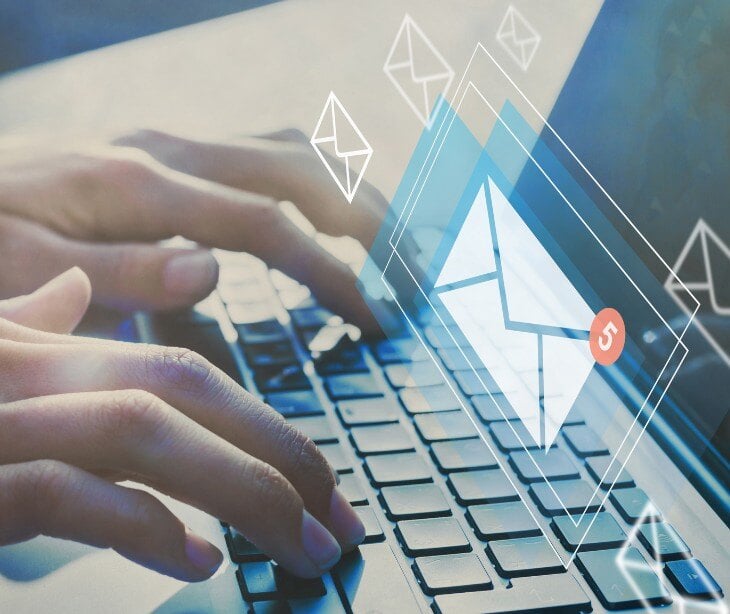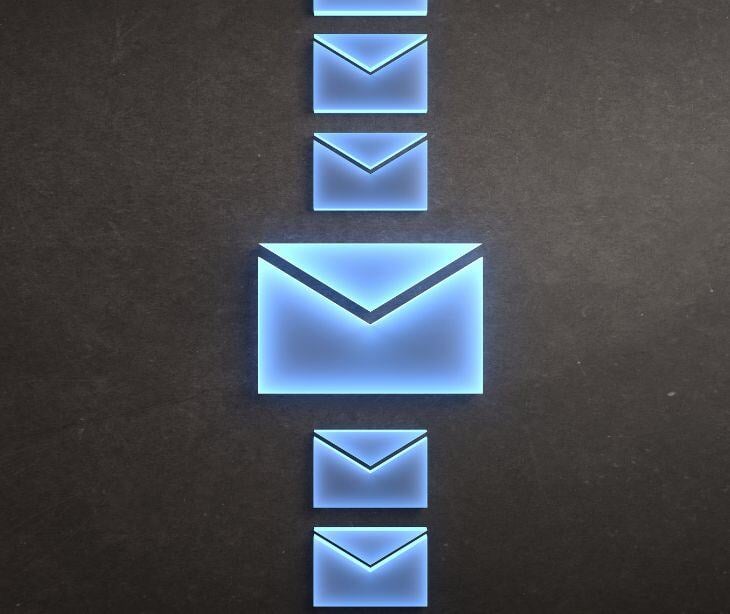4 min read
Is accessing work email on my cellphone HIPAA compliant?
Kirsten Peremore
August 05, 2024

Accessing work email on your cellphone can be HIPAA compliant, as long as strong security measures are set up like encryption and secure access controls to keep sensitive information safe and private.
What is HIPAA compliance?
HIPAA compliance involves adhering to specific rules and sections set by HIPAA, such as the Privacy Rule, Security Rule, and Breach Notification Rule. The Privacy Rule (45 CFR Part 160 and Subparts A and E of Part 164) sets standards for protecting patients' medical records and other personal health information, ensuring confidentiality. The Security Rule (45 CFR Part 160 and Subparts A and C of Part 164) establishes national standards for securing electronic protected health information (ePHI) through administrative, physical, and technical safeguards.
The Breach Notification Rule (45 CFR §§ 164.400 414) requires covered entities to notify affected individuals, the Department of Health and Human Services (HHS), and, in some cases, the media in the event of a data breach involving unsecured PHI. Healthcare providers, insurance companies, and business associates must comply with these rules to prevent unauthorized access and data breaches.
The Security Rule and device security
The Security Rule requires organizations to establish and enforce policies that govern the use of devices accessing or storing electronic PHI (ePHI). Section 164.310 requires that healthcare organizations, “Implement policies and procedures that govern the receipt and removal of hardware and electronic media that contain electronic protected health information into and out of a facility, and the movement of these items within the facility.”
Organizations must establish clear policies and procedures for handling hardware and electronic media containing ePHI. These protocols cover both the receipt and removal of these items, as well as their movement within facilities. Secure disposal procedures are necessary to ensure that ePHI and the devices storing it are properly destroyed when no longer needed. Media reuse policies also require the removal of ePHI from electronic media before reuse, preventing any leftover data from being accessed. Maintaining accountability involves keeping detailed records of the movements of hardware and media, along with the individuals responsible for them.
Understanding HIPAA compliant email
According to the HHS, “The Privacy Rule allows covered health care providers to communicate electronically, such as through e mail, with their patients, provided they apply reasonable safeguards when doing so.”
Email communication is allowed under HIPAA, but it comes with specific requirements to protect patient privacy and ensure the security of sensitive information. To make sure they are using HIPAA compliant email, healthcare providers and organizations must implement several safeguards. One of the most necessary measures is encryption, which makes sure that the contents of the email are protected and cannot be easily accessed by unauthorized individuals.
TLS stands for Transport Layer Security, and it's a protocol that encrypts the data sent over the internet, making it unreadable to anyone who doesn't have the proper key. TLS 1.2 or higher offers advanced encryption methods, strong authentication, and better protection against potential cyber threats compared to older versions. This means that when emails containing protected health information (PHI) are sent using TLS 1.2, they are securely encrypted, reducing the risk of unauthorized access or interception.
The risk of accessing work emails on personal devices
- Personal devices may not have the same level of email filtering, increasing the risk of falling victim to phishing scams that target sensitive information.
- Personal devices might automatically sync emails and attachments with cloud services or backup applications that are not HIPAA compliant.
- Using non approved apps to access work emails can expose sensitive information through app specific security flaws.
- Personal devices may have apps with broad permissions that can access and misuse email data.
- Personal devices that are jailbroken or rooted may bypass built in security protections, increasing susceptibility to malicious software.
- Personal devices may not enforce strong password policies, making it easier for unauthorized individuals to access work emails.
- Mixing personal and work emails on the same device can lead to accidental sharing or forwarding of sensitive work related information.
- IT departments may not have the ability to remotely wipe or secure personal devices if they are lost or compromised.
- Personal devices may not receive timely software updates, leaving them vulnerable to known security exploits.
- Viewing sensitive work emails on personal devices in public settings can lead to unauthorized persons seeing confidential information.
How to create effective BYOD policies
Creating effective BYOD policies requires a thoughtful approach that balances convenience with security. The process begins with defining the scope and purpose of the policy. Specifying allowed devices, such as smartphones, tablets, or laptops, and the operating systems they must support, set clear boundaries. Establishing these parameters ensures that all devices are compatible with the organization's systems and reduces the risk of security vulnerabilities.
Security is another necessary aspect of any BYOD policy, and measures must be in place to protect sensitive information. It involves requiring strong passwords, enabling device encryption, and mandating regular software updates. Educating employees on these practices helps them understand the need for compliance and the potential risks of neglecting these measures. The policy should clearly define acceptable use, outlining what data can be accessed and stored on personal devices and specifying prohibited activities, such as downloading unauthorized applications or visiting unapproved websites.
Best practices to protect PHI even when work email is accessed on personal devices
Maintain secure communication channels- Use secure email protocols such as TLS 1.2 or higher to encrypt email communications. It provides protection during transmission between the device and the server, preventing interception by unauthorized parties.
- Ensure that personal devices can be remotely wiped in case of loss or theft. This feature allows administrators to delete all sensitive information, including PHI, from a device remotely to prevent unauthorized access.
- Implement a Mobile Device Management (MDM) solution to enforce security policies on personal devices. MDM can control app installations, enforce security settings like screen lock durations, and restrict access to certain network resources. It can also ensure that devices are compliant with security policies before allowing access to work emails.
- Ensure that all personal devices are regularly updated with the latest operating system and security patches. Outdated software can have vulnerabilities that may be exploited by cybercriminals to access sensitive information.
- Encourage the use of separate user profiles or containers on personal devices for accessing work related applications and data. Segregation prevents accidental cross contamination of personal and work data, ensuring that PHI remains within a controlled environment.
- Deploy DLP tools that monitor and control the movement of PHI. These tools can prevent the unauthorized sharing of sensitive information through email or other applications, alerting administrators to potential data breaches.
FAQs
When should the HHS be notified in the event of a breach?
The HHS must be notified of a breach involving 500 or more individuals without unreasonable delay and no later than 60 days from the discovery of the breach.
What is the minimum necessary standard?
The minimum necessary standard requires that only the least amount of PHI needed to accomplish a task is used, shared, or accessed.
What is PHI?
PHI refers to any information that can identify an individual and relate to their health status, healthcare, or payment for healthcare services.
Subscribe to Paubox Weekly
Every Friday we'll bring you the most important news from Paubox. Our aim is to make you smarter, faster.




